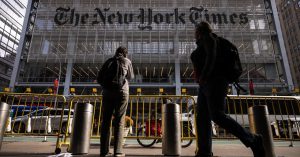An old joke from grade school asks, “What do we get when all the cars on the road are painted white?” The answer, “A white car-nation.”
Indeed, white has become the most popular vehicular color treatment on the road in recent years, now accounting for 27.6 of all models sold. That amounts to a 77.4% increase since 2004, according to a study of over 20 million used-car transactions conducted by the online marketplace iSeeCars.com.
As if that’s not unimaginative enough, the study reports that so-called “grayscale colors” (white, black, gray and silver) that all but fade into a crowded parking lot now account for 80% of all vehicles, compared to 60.3% in 2004.
The up-and-coming hue right now is gray, which is about as monochromatic as it gets. The website says it’s gained the most market share over the past two decades at a 81.9% boost. Black accounts for 22% of the vehicular population, which represents a 56.5% change since 2004, while silver has actually dropped in popularity over the same period by 52.2%.
What about actual colors? The study indicates that brighter hues have plummeted in popularity by nearly half over the last 20 years, despite automakers’ continuing to offer a full range of paint treatments. Shades of gold, purple, brown and beige have each become 80% or more less prevalent during that span, with gold and purple each able to muster just 0.1% of the market last year.
Can we chalk this up to poor taste, a lack of creativity or just plain color blindness?
“Colorful cars appear to be an endangered species,” says, iSeeCars’ Executive Analyst Karl Brauer. “Every non-grayscale color lost ground over the past 20 years, leading to the undeniable dilution of our car color spectrum.”
The aforementioned non-colors tend to dominate each individual vehicle segment, with even red-hot sports cars eschewing bright colors for monochromatic treatments, which now account for nearly 60 percent of all performance cars sold. The leader here is grey (at 20,1%), followed by white (19.4%) and black (19.4%), with red the first bona fide hue at 14.3%, though that represents a 35.1% drop over the last 20 years. While green accounts for just 3.4% of all sports cars on the road, it’s seen the most growth here, with a reported 537% gain since 2004.
Perhaps ironically, previous iSeeCars reports indicated that vehicles painted in bright colors tend to hold on to their resale values more tenaciously than do monochromatic treatments. Yellow models were found to retain an average of 86.5% of their original values after three years, compared to the industry norm of 77.5%. Other most-valuable colors with regard to retained worth include beige (82.2%), orange (81.6%), green (80.8%) and red (79.4%).
Though yellow takes the prize in general, the most valuable paint treatments according to iSeeCars tend to vary somewhat by market segment. For example, the website found that while yellow was the top color for resale value among SUVs convertibles, and coupes last year, beige scored highest among pickup trucks, brown taking the honors among sedans and green bringing the most bucks back at resale time among minivans.
The full report from iSeeCars.com can be found here.
The Most- And Least-Popular Car Colors
These are the most prevalent car, truck and SUV colors according to iSeeCars’ study of 20 million used cars from model years 2004 – 2023 sold from January 2023 to April 2024, with their respective percentage increases or decreases in market share over the past two decades noted.
- White: 27.6% (+77.4%)
- Black: 22.0% (+56.5%)
- Gray: 21.3% (+81.9%)
- Silver: 9.1% (-52.2%)
- Blue: 8.9% (-18.0%)
- Red: 7.3% (-38.1%)
- Green: 2.0% (-50.6%)
- Orange: 0.5% (-14.8%)
- Beige: 0.5% (-86.3%)
- Brown: 0.4% (-86.5%)
- Yellow: 0.2% (-75.7%)
- Gold: 0.1% (-96.8%)
- Purple: 0.1% (-92.7%)
Source: iSeeCars.com.
Read the full article here






